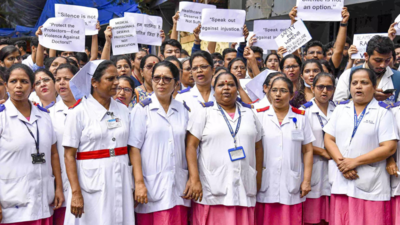
The victim, a prominent physician based in Kolkata, was found dead under brutal circumstances that have shocked the nation. The gravity of the crime has led to an unprecedented response from both the public and various professional groups. As details of the case emerged, it became evident that the incident not only highlighted issues of violence against women but also raised questions about the safety and security of medical professionals in India.
Protestors have flooded the streets, calling for swift justice and demanding enhanced protections for women and medical personnel. Demonstrations have occurred in multiple cities, with participants urging the government to take a more proactive stance in addressing violence and improving safety measures. These protests reflect growing frustration over perceived inadequacies in the current legal system and law enforcement practices.
The involvement of the Supreme Court marks a significant development in the case. By taking up this matter, the highest court of the land aims to ensure a thorough and fair examination of the evidence and proceedings. This decision also underscores the seriousness with which the judiciary is treating allegations of severe criminal offenses and the commitment to uphold justice.
Legal experts and activists have expressed a mixture of hope and apprehension about the Court’s involvement. While the Supreme Court’s intervention is seen as a step toward ensuring justice, there are concerns about the pace of legal processes and the potential for political or social influences to impact the outcome. The Court's role will be crucial in navigating these complexities and delivering a verdict that reflects both the gravity of the crime and the expectations of the public.
Amid this turmoil, the medical community has rallied in support of their colleague. Medical associations and groups have voiced strong condemnation of the crime and have called for increased security measures for healthcare professionals. This solidarity underscores the broader implications of the case, extending beyond legal ramifications to touch upon issues of workplace safety and professional dignity.
As the Supreme Court prepares to delve into the case, all eyes are on the judicial proceedings. The outcome will be closely watched, not only for its impact on the individuals involved but also for its potential to influence broader legal and social reforms. The case has become a touchstone for discussions about gender violence, judicial accountability, and the protection of professionals, reflecting deep-seated concerns within Indian society.
